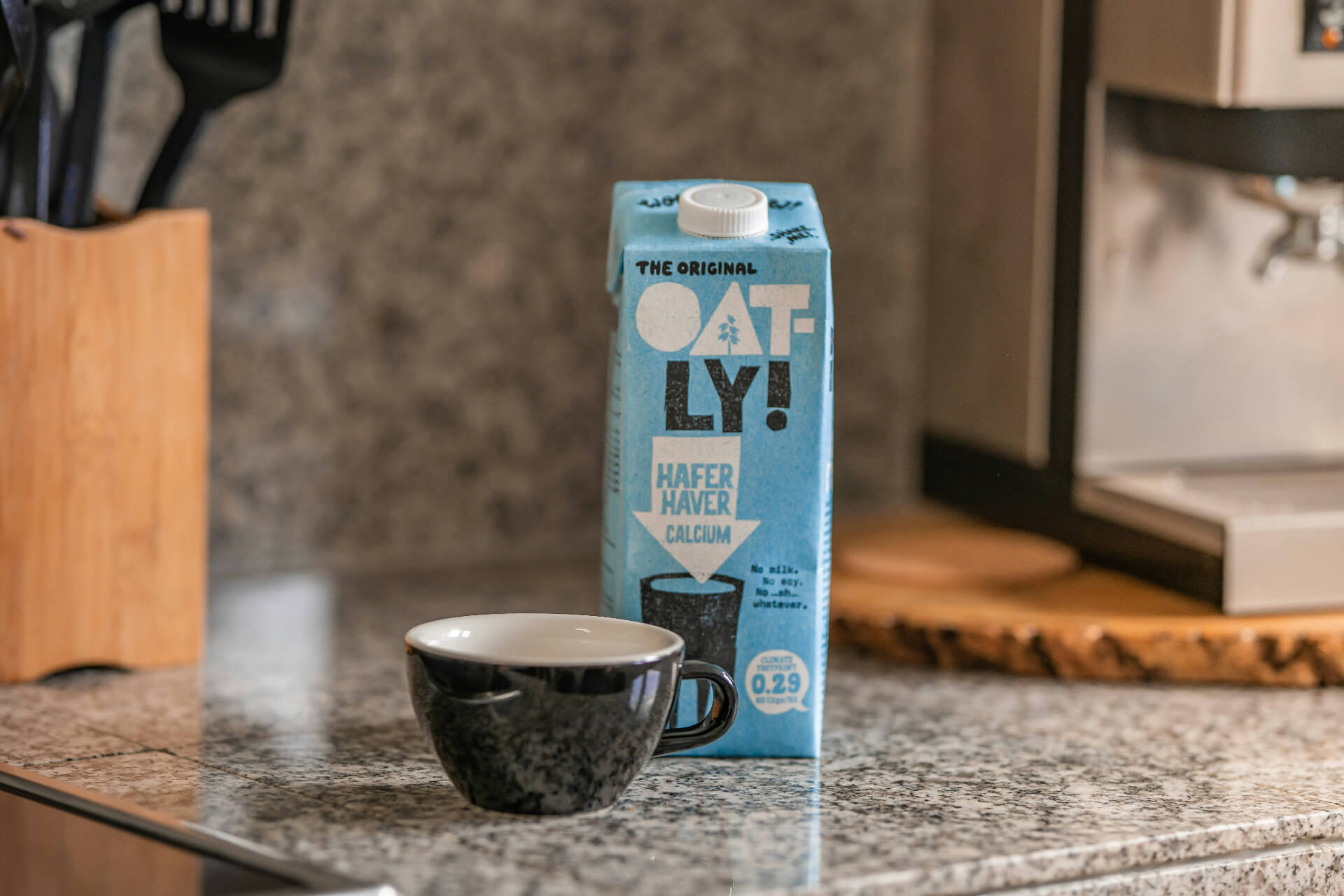
Oat Milk Ice Cream 3 Ways and Why You Should Try It
We are reader-supported. When you buy through links on our site, we may earn affiliate commission.
Milk alternatives and nut milks are the new normal. When was the last time you opted for 2% when almond or oat milk was on the menu? This is seeping into plenty of other dairy products, including ice cream. Is oat milk ice cream the new thing? What are the impacts of conventional ice cream, can you make it yourself, and does it help your environmental impact?
The Environmental Footprint of Dairy Ice Cream
Ice cream production is a chaotic business when it comes to measuring carbon footprints. Every maker is different, and it also depends on the flavors. There are some ingredients, such as chocolate or fruits, which are more ecologically damaging to source than others. Additionally, the concentrations and types of other ingredients, like sugars, additional fats, and other additives make the determination even harder to nail down.
The last consideration about carbon impact before assessing is energy. Ice cream requires intense refrigeration to formulate, store, and transport. The energy consumption is intense, though the industry could mitigate this with renewable energy and curbing energy use in other aspects of production.
With all of this being said, what is the actual footprint of traditional, dairy ice cream? It ranged from 0.360 to 0.385 kilograms of carbon dioxide per kilogram of ice cream, depending on whether it not it had fat or sugar substitutes. Around 77% of this came from the pasteurization process. Other carbon-intensive activities included homogenization, ripening, and nutrition-related edits to the recipes.

How to Make Oat Milk Ice Cream
You can either use store-bought or homemade oat milk to make ice cream. Here’s how it works. You will need an ice cream maker or a specialized blender to be able to do this.
Mix or whisk these ingredients together, adjusting measurements as needed:
- 2 cups of oat milk
- ½ cup of nut butter
- ⅛ teaspoon of salt
- Sweetener choice, starting with ¼ cup and adding more as desired
After adding the ingredients, all you need to do is pick a flavor. Add some cocoa powder for chocolate or espresso for a rich coffee flavor. Other options include banana, peanut butter, or standard vanilla. Numerous extracts are on the market for people who want to mix various notes, from lemon to peppermint.
All you have to do after that is pour the mixture in and use the machine according to the directions. That’s it. Once the ice cream maker or blender is finished making a homogenous mixture, put it in a container and freeze for at least an hour or more, depending on the machine’s recommendations and your freezer’s temperature.
If you don’t want to make your own, here are some popular options on the market:
- Planet Oat
- Oatly
- McConnell’s
- Van Leeuwen
- So Delicious
- Whipped Urban Dessert Lab
3 Ways to Enjoy Oat Milk Ice Cream
If you want a plant-based dessert, here are a few ways to pair oat milk ice cream with a delectable dining experience.
Vanilla Oat Milk and Vegan Apple Crisp
Nothing feels more autumnal and cozy than a warm, cinnamony apple crisp that’s piping hot with a vanilla ice cream to melt on top of it like a delicious, sweet soup. The crunch of the crumble will be nice against the silkiness of the oat milk ice cream, especially if it’s a complementary flavor to apple.

Oat Milk Ice Cream Root Beer Float
Make your classic root beer float but pop in oat milk ice cream instead. This is a great option for vegan ice cream skeptics in your life. They will have a hard time telling the difference if texture is a concern of theirs, so long as the flavor matches up to expectations.
Ice Cream Sandwiches
Some people may think they have to reinvent the wheel when designing oat milk ice cream desserts, but it sometimes is just as easy as it sounds to replace dairy ice cream with the dairy-free option. Normally, you can do a one-to-one substitute with no consequences. Make your favorite cookie and pop a dollop of oat milk ice cream between for an even richer, more delicious snack.

The Way Oat Milk Ice Creams Helps Decarbonize Dairy
Conversations around the sustainability of nut milks and milk alternatives are more popular. There’s even pea milks now — it’s getting experimental out there. So, is taking oat milk and expanding it into other commercial applications like ice cream going to help in the long run when it comes to decarbonizing the dairy industry? For this purpose, we will be exclusively analyzing oat milk against dairy.
U.S. dairy contributes to 2% of the nation’s emissions — obviously, this isn’t all due to ice cream. This is a combination of water use, land exploitation, greenhouse gas emissions, pollution, and more. Oat milk — and, therefore, oat milk ice cream — uses less of each of these resources, making it objectively the better choice.
Curious about agricultural differences between them? Here are some of the major comparisons between dairy milk and oat production:
- Oat milk uses 0.66 square meters of land versus 54 of dairy.
- Dairy uses 628.2 liters of water versus 48.24 liters.
- Oat milk makes 09 kilograms of carbon dioxide per liter versus 3.15 in dairy.
Therefore, supporting, making, and eating vegan brands is a great way to have a holistically positive impact on the planet through your dessert choice.
Will You Try It?
Adventuring into milk alternatives is a natural response to the negative press the dairy sector has received in the last several decades. Will desserts follow suit until oat milk ice cream is the default on the grocery list instead of the bog standard? Only time will tell, but it will likely come down to accessible pricing and its ability to replicate the look, taste, and feel of dairy ice cream.
Have you tried making your own oat milk, much less an oat milk ice cream? Making the switch, even every now and then, could reduce the carbon footprint of your diet enough to make a difference.
Share on
Like what you read? Join other Environment.co readers!
Get the latest updates on our planet by subscribing to the Environment.co newsletter!
About the author
Maria Visser
Maria serves as the Assistant Editor of Environment.co. A true foodie and activist at heart, she loves covering topics ranging from veganism to off grid living.





